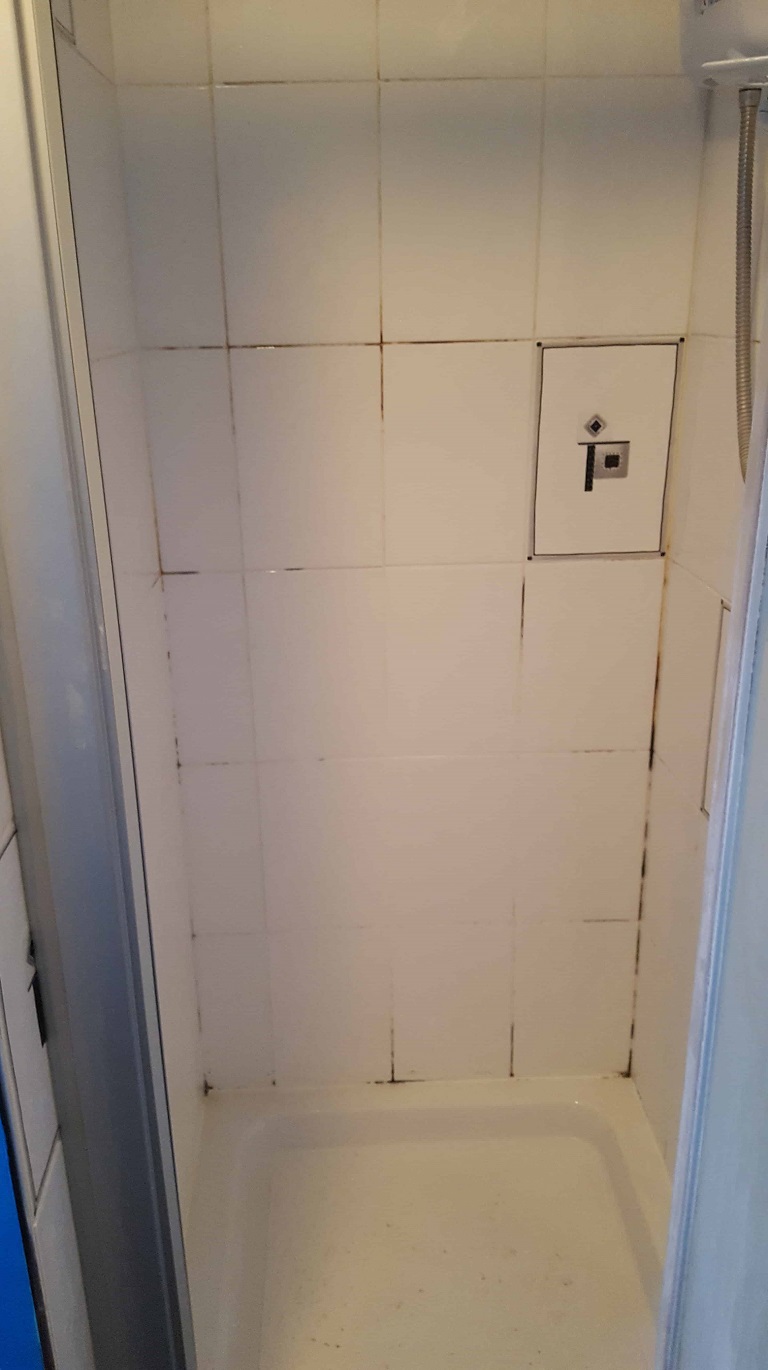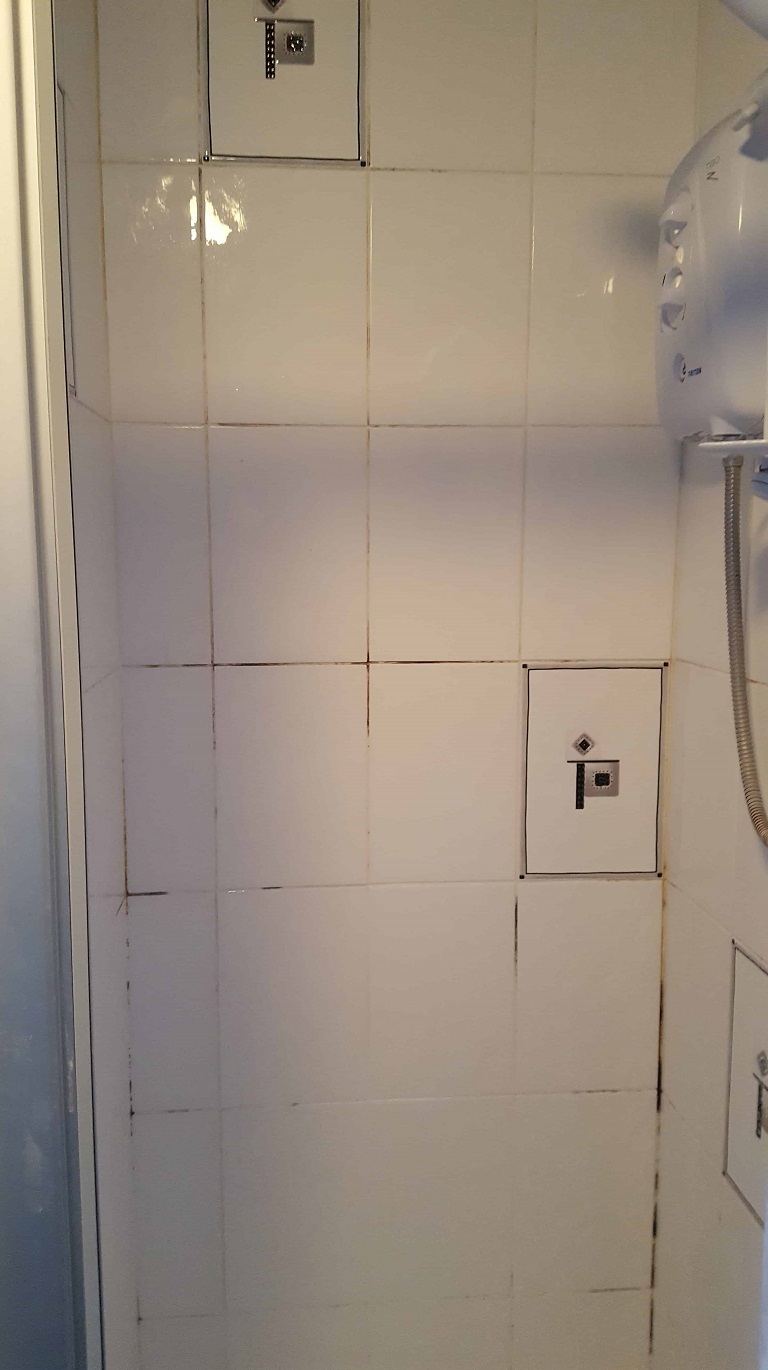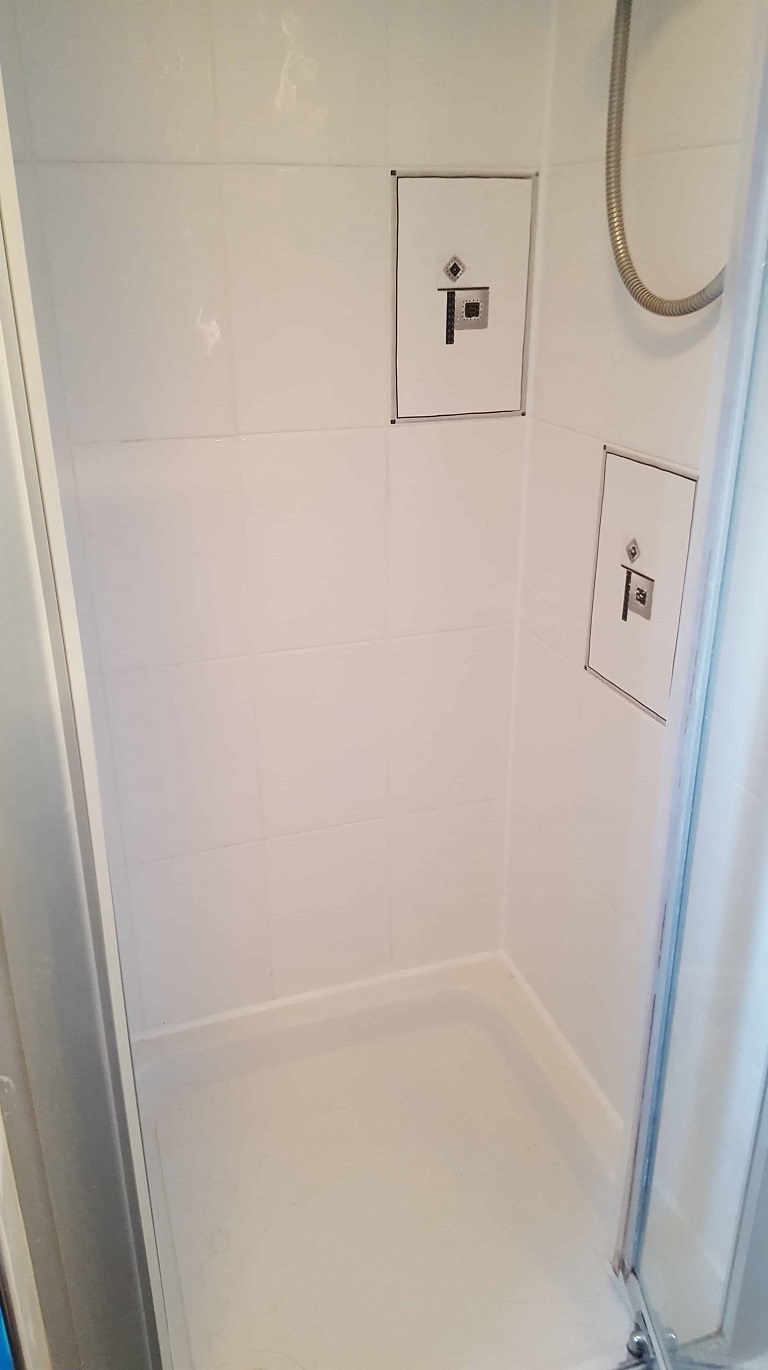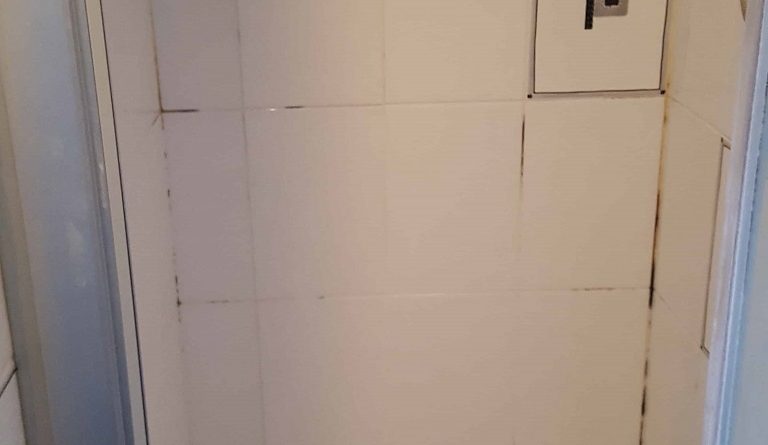Renovating Three Shower Cubicles in Sale, Cheshire
The photographs below are from one of three shower cubicles we were asked to clean and restore at a modernised Victorian property in SALE Cheshire. Ceramic tiles are glazed so very easy to keep clean, grout and silicone however are not and if you let mould build-up untreated it can very difficult to remove.
Mould likes a warm damp environment which can be reduced by improving the ventilation in the shower room, other steps you can take to reduce mould include always leaving the door open after a shower to improve cross ventilation and rinsing the shower down with cold water after a shower. Tile Doctor also have a product called Oxy-Pro that you can spray on your tiles after use.
 |
 |
Sale is a town in Trafford, Greater Manchester but is historically part of Cheshire and dates to before the Middle Ages. A survey commissioned by the Royal Mail in 2017 highlighted Sale as the 4th most desirable town in England to live in and being so close to the city of Manchester makes it a popular choice for commuters.
Cleaning Ceramic Bathroom Tile and Grout
To get the grout clean Tile Doctor Pro-Clean was decanted into a spay bottle diluted with water and the solution was sprayed onto the grout lines. Pro-Clean in a strong and effective grout cleaner and after leaving it in place for about five minutes it was scrubbed in by hand using a stiff brush along the grout lines. I also gave the tile and cubicle glass a clean with Tile Doctor Oxy-Pro which comes in a ready to use spray bottle.
The next step was to carefully remove the old silicone sealant from around the edges of the shower cubicle using a sharp knife, so it could be replaced with new.
At this stage I took a step back to review the results of the cleaning, I wanted the best possible outcome for my customer and if more work was needed to get the shower looking it’s best now was the time. I concluded that the grout was much improved by unfortunately the mould staining was still visible in areas and that the best way to proceed would be to colour the grout.
Colouring Shower Tile Grout
Tile Doctor have a Grout Colourant product that’s available in ten different colours including White which I felt would be the best colour for the cubicle. Other colours include three shades of Grey, two shades of Brown and two shades of Beige as well as Black. The Grout Colourant is painted onto the grout lines using a small brush and I find a toothbrush works well for this purpose. Excess colourant needs to be removed from the tile before it sets, and I often find baby wipes work well for this purpose.
The grout colourant adds an epoxy barrier over the grout that is resistant to staining and much easier to clean than the grout itself. With this in place the grout will stay protected and the cubicle should keep its appearance for some time to come.
While the Grout Colourant was drying I replaced the silicone around the base of the shower cubicle using a premium mould resistant silicone that should be more resistant to staining.
Once the colourant and silicone had dried I gave the cubicle a final inspection and buffed up the ceramic tiles with a six-inch white pad fitted to a handheld buffer. As I mentioned before there were three shower cubicles to complete so as one was drying I was able to move onto another and as a result managed to complete all three in one day.
 |
 |
Source: Tile and Grout Cleaning and Renovation Service in Sale, Cheshire
